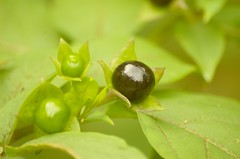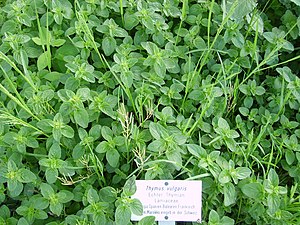 Golden Tree Cotek or Mas Cotek is a kind of herbs and plants used in the medical field Malays. In Malay medical cotek mas tree is divided into male cotek mas (small leaves) and female (large leaves).
Golden Tree Cotek or Mas Cotek is a kind of herbs and plants used in the medical field Malays. In Malay medical cotek mas tree is divided into male cotek mas (small leaves) and female (large leaves).Mas cotek or in scientific language, Ficus deltoidea a plant that is now receiving attention, especially among traditional medical practitioners. Besides Tongkat Ali and Fatima Masjid, Mas cotek known for their nutritional value are available to treat many diseases and is good for health care.
Name cotek Mas is a popular local names on the east coast of Peninsular Malaysia. In Sabah and Sarawak, the Borneo Islands, this plant is known as "narrow-narrow '. There is also the tribe in Sabah is called as 'agoluran'. In Indonesia, this plant is called 'tabat Prix' and a few names in other areas such as figs jelatih, a single fig, elephant ears fires and fires monkey ears. In Africa, it is known as 'Kangkalibang'. Despite this, the name of Mas cotek is the most popular name and was known when compared with the local names of others.
In Malaysia, scientists have identified that there are more than 80 plant species belongs to the family of Ficus deltoidea. Plant also known as the fig is one species of Ficus deltoidea family. Ficus deltoidea Jack or Mistleteo fig are among the species scientifically classified and it belongs to the family Moraceae
 Name given as dowry cotek there tiny spots on the surface of the gold-leaf on each sheet. While the fruit is a pink dot. Seeds are spread by birds that eat its fruit. Traditionally mas cotek can be categorized into:
Name given as dowry cotek there tiny spots on the surface of the gold-leaf on each sheet. While the fruit is a pink dot. Seeds are spread by birds that eat its fruit. Traditionally mas cotek can be categorized into:a) Mas cotek male
b) Mas cotek female
The most obvious differences between species can be identified cotek mas mas cotek male and female species is in form of leaves. Cotek mas tree leaves of the male has a small, tapered, thin and light, while the back leaf is colored spots. In general, the leaves have a red dot, but there are leaves with two and three red dots.
 For cotek mas tree has the appearance of the female is the larger leaves and many leaves are oval and round and thicker than the male species. Similar to the male species cotek mas, mas cotek female leaves also have spots on the back of the leaves. Color dots on the leaves of the female is colored red instead of black. Cotek gold veins more obvious female on the upper surface of leaves compared with green males.
For cotek mas tree has the appearance of the female is the larger leaves and many leaves are oval and round and thicker than the male species. Similar to the male species cotek mas, mas cotek female leaves also have spots on the back of the leaves. Color dots on the leaves of the female is colored red instead of black. Cotek gold veins more obvious female on the upper surface of leaves compared with green males.Study that was done by the University of Malaya (UM) and the Agricultural Research Institute of Malaysia (MARDI) plant consists of four active ingredients needed body:
1. Flavonoids
* A powerful anti-oxidants to help the healthy circulation mengekalan
* Acting as an anti-inflammatory and anti-Rival
2. Tannis
* Tighten the loose tissue, drain excess water secretion (diarrhea are) and protect the damaged tissue, such as eczema or burns
3. Triterpenoids
* Helps remove and remove phlegm and help absorb nutrients
4. Phenols
* Helps to reduce and eliminate swelling and acts as an antiseptic
Studies show that five active ingredient that is required by the human body contained in the mas cotek are flavonoids, tannins, triterpenoids, proanthocyanins and phenols. These materials are identified able to help the mind in the process of remembering and can concentrate and can treat the problem of lack of concentration. It is also able to launch the effectiveness of Vitamin C in anti-oxidants, controlling nitrite oxide and blood circulation, regulate the oxidation of low density lipoprotein (LDL), known as bad cholesterol (bad cholesterol) and reduce high blood pressure.
Almost all components Cotek Mas tree from the root, stem, leaves and fruit contain high medicinal value. So all the parts may be dried and used / applied in the form of herbal tea.
























































